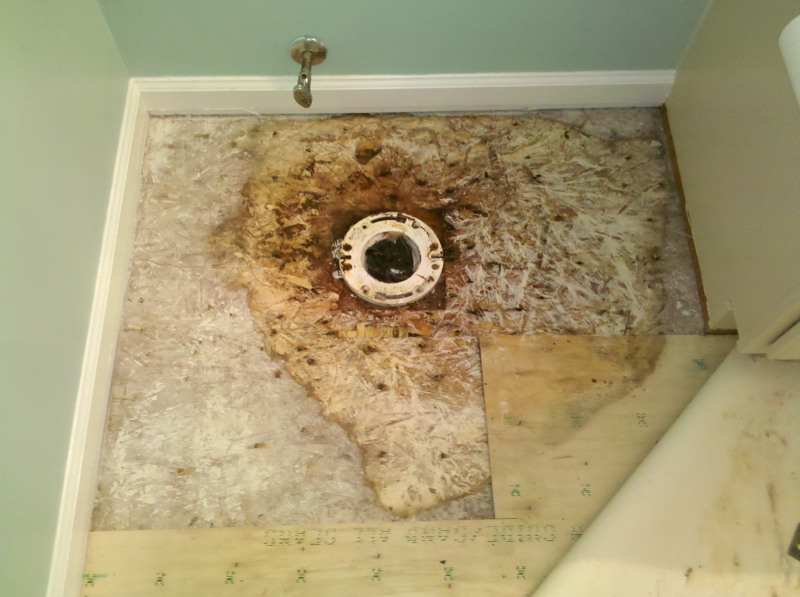Just How to Stop Water Damage in Your Bathroom
Just How to Stop Water Damage in Your Bathroom
Blog Article
This great article which follows relating to Looking for Signs of Water Damage in the Bathroom is relatively stimulating. You should see for yourself.

The restroom is exceptionally susceptible for wet build-up and possible water damage due to the regular use water in it. This write-up uses basic assessment techniques to aid spotting water damage hazards.
The frequent use of water in the shower room makes it exceptionally susceptible for moist accumulation and potential water damage. By examining it consistently, you can lower water relevant damages.
The adhering to collection of examinations is very easy to execute as well as must be done once in every 3 months in order to keep your restroom healthy and to avoid possible water damages brought on by the bath tub, the shower, pipe joints as well as plumbing, sinks, closets, as well as the commode
Do not overlook doing these examinations as well as be complete while performing them. Keep in mind that these basic evaluations can save you a great deal of money by giving early signs for water damages
Sinks and also Cabinets
Sinks and cupboards are subjected to dampness and also moisture daily as well as are usually overlooked. Examine frequently under the sink and on the kitchen counter over it. Repair any type of drip in the catch as it may recommend drain troubles. Browse the sink, sluggish draining pipes may suggest an obstructed drainpipe. Change sink seals if they are cracked or loose.
Bathtub and also Shower
The shower as well as bathtub call for special interest and also maintenance. Examine the tiles and change if fractured. Make sure that there is no missing grout between the tiles. Examine and change split caulking at joints where the wall surfaces satisfy the floor or the bathtub. Clogged drains pipes and also pipelines troubles will certainly stop the tub from drying out and may indicate severe issues underneath the bath tub. Consult with an expert instantly to prevent architectural damages. Focus on stainings or soft areas around the tub wall surfaces as they might suggest an internal leak.
Plumbing
Signs for water damage are hard to spot because a lot of pipes are mounted inside the wall surfaces.
Pay unique focus to floor covering as well as walls moisture and also discolorations as they may indicate an undetectable plumbing trouble. Check dampness levels in adjacent areas also.
The Toilet
The toilet is an at risk water junction. Check the water lines and look for leakages around the bathroom seat, in the hose, and also under the water container. If you identify any kind of signs of wetness on the flooring around the commode, look for leaks in the toilet edge and storage tank seals.
Understand that hanging commode bowl antiperspirants increases the opportunities for obstructions.
Water Damage Signs In The Bathroom To Avoid Cleanup
Musty smell
This is one of the easiest signs to catch because musty smells are so odorous. The damp, earthy, moldy smell should be a big red flag. The smell will develop when moisture gets trapped in surfaces, and begins to facilitate mold growth. Leaking pipes under cabinets, inside walls, and behind shower fixtures will cause moisture to stay trapped and not dry, which will lead to mold growth and spread. As soon as you notice any musty smells in your bathroom, have it checked for hidden water damage and cleanup signs.
Visible mold
If the smell isn’t there to give it away, sometimes you will actually see mold growth. Finding mold in your bathroom is a serious problem, because mold is very harmful to your health. By the time mold growth is visible, it also means that water damage has already occurred and been present for some time. The only way the mold problem can be resolved is to find the source of the moisture and get it stopped. To safely and adequately remove mold, you need to have professionals handle the remediation. Do not waste any time in getting mold problems addressed, fixed, and sanitized so that you can protect you and your family from the many respiratory symptoms caused by mold exposure.
Damaged floors
Bathroom floors should be able to withstand some exposure to water while still remaining in good condition. However, when excess exposure or water leaks occur, they will begin to damage even the most water-resistant flooring. If you notice any cracking, bubbling, staining, or warping on your bathroom floors, there is probably a water leak somewhere causing the distortion. If you notice areas of the floor have become softer, or even have a spongy feeling, there is probably damage to the subfloor. Subflooring is typically made up of plywood. When plywood is exposed to water or moisture, it will absorb it. Once it has become saturated, the weight of the excess water will cause the wood to swell and soften. Check the floors in your bathroom frequently to catch any of these sings before they lead to damaged subflooring.
Changes on walls
When water leaks behind walls, it will cause changes in the drywall. Peeling plaster, blistering paint, and soggy wallpaper are all good indicators that excess water is building up behind the wall. Water leaking behind drywall will cause it to swell and be soft to the tough. If you start to notice gaps along the trim of your walls, or where tile meets the wall, it could also be a strong indicator that there is a leak behind the wall. Any changes, distortion, or damage on the walls should be evaluated as soon as you notice it to prevent further water damage and cleanup.

As an avid reader about Preventing Water Damage in the Bathroom, I was thinking sharing that portion was worthwhile. If you enjoyed reading our post kindly be sure to share it. Thank-you for going through it.
Check Us Out Report this page